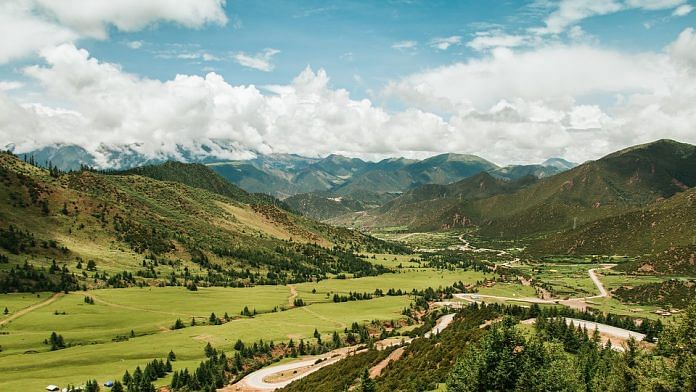Bengaluru: Scientists have discovered one of the most complete skeletal remains of Denisovans, a group of ancient hominins, in Tibet — a discovery that has helped them understand an old mystery. Hominins are cousins of Homo sapiens or human beings, belonging to the same human group but a different species. All of them, except human beings, are now extinct.
The Denisovans, who date back 15,000 to 10 lakh years, are seen as the most mysterious hominins.
The new finding is the first Denisovan specimen found outside of the Denisova cave in Siberia and is dated at 1.6 lakh years old. The discovery, which was noted in the journal Nature this week, confirms the theory that ancient humans were geographically spread far wider than we believed thus far.
Significance of the finding
Much like any archaeological finding, the Tibetan finding also holds clues to human history, evolution, and possibly future. It is also a testament to how fast science is evolving.
The new fossil — a lower jaw with two teeth — is the most complete specimen of a Denisovan humans have ever discovered.
Earlier fossils were all in the form of either individual teeth or single bones/bone fragments. However, this fossil, unlike previous specimens, did not contain DNA, leading scientists to perform a different kind of analysis, involving proteins that last much longer than DNA — marking the first time an ancient human was identified purely by analysing protein.
Analysis of the two teeth revealed collagen proteins. When scientists studied the specimens, they found one of the teeth to be in the early stages of formation, which suggests that the jaw belonged to an adolescent.
They also found the answer to a long-standing mystery about how Tibetans survive at high altitudes.
Tibetans have a genetic mutation that reduces the amount of haemoglobin in their blood. Haemoglobin is an oxygen-carrying protein, and this mutation allows Tibetans to survive at high altitudes with low oxygen levels.
The study suggests that it’s possible Denisovans adapted to the low-oxygen environment in the Tibetan Plateau and passed it on to Homo sapiens, including in neighbouring areas like Nepal, renowned for its Sherpas, several thousands of years later.
Hunting for ancient humans
The Denisova cave in Siberia was a fertile digging ground for dog and wolf bones in the 1970s. Its rich supply of ancient bones prompted scientists to investigate it for human bones in 2008. That year, Russian archaeologists looking for human bones did find one: A finger that DNA analysis identified as that of a little girl.
The cool temperatures inside the cave had preserved the DNA well, and further examination led to the conclusion, in 2010, that this hominin, believed to have walked the earth 35,000 years ago, actually belonged to a type of ancient human we didn’t know of before.
The group was named Denisovan after the cave.
Analysis of some samples revealed that ancient groups of humans, Neanderthals included, had occupied the Denisova cave for 1.25 lakh years.
Since then, archaeologists have discovered only six pieces of bones belonging to Denisovans. Five were found in the same cave, and the latest finding is the one in Tibet.
A DNA analysis of these fragments has revealed that the ancestors of Denisovans split from the ancestors of the modern Homo sapiens nearly 7 lakh years ago. Within a few centuries, this group also split into two. One group went north, into Europe and West Asia, eventually becoming the Neanderthals, while the other moved east, becoming Denisovans.
Meanwhile, in Africa, 1.3 lakh years ago, modern Homo sapiens emerged from the second line, ready to spread out into the territories of these subspecies 70,000 years later.
Since all these subspecies were human, they could technically mate and interbreed with each other. This is much like lions and tigers, who are technically different species but can actually interbreed and produce novel hybrids like the liger.
We have evidence of this interbreeding.
Denisova 11, an earlier individual discovered in the same cave, was half-Denisovan, half-Neanderthal.
Furthermore, our own DNA analysis shows that we aren’t 100 per cent pure Homo sapiens. We carry the DNA of both Denisovans and Neanderthals, and possibly other cousins, having interbred with them all as we expanded.






